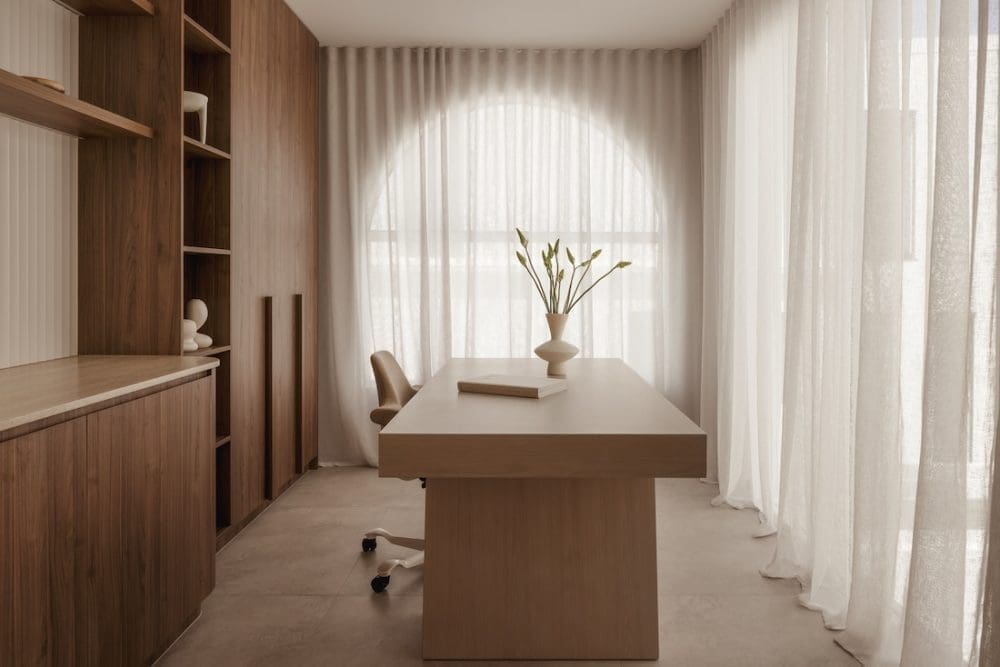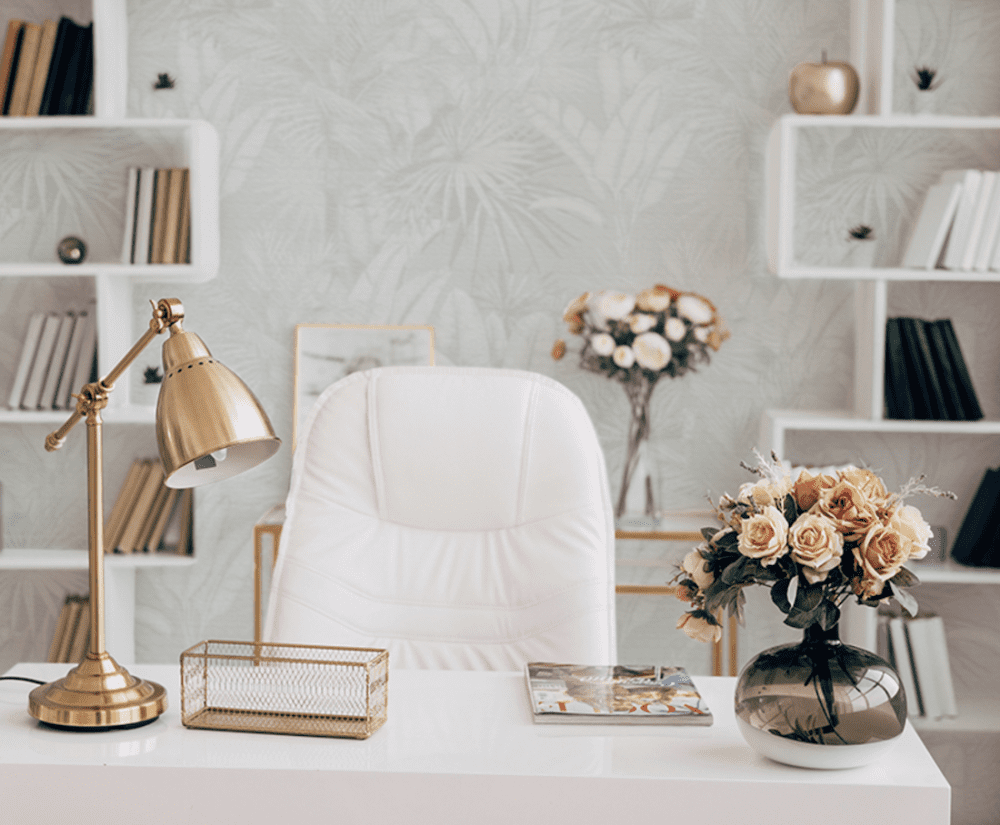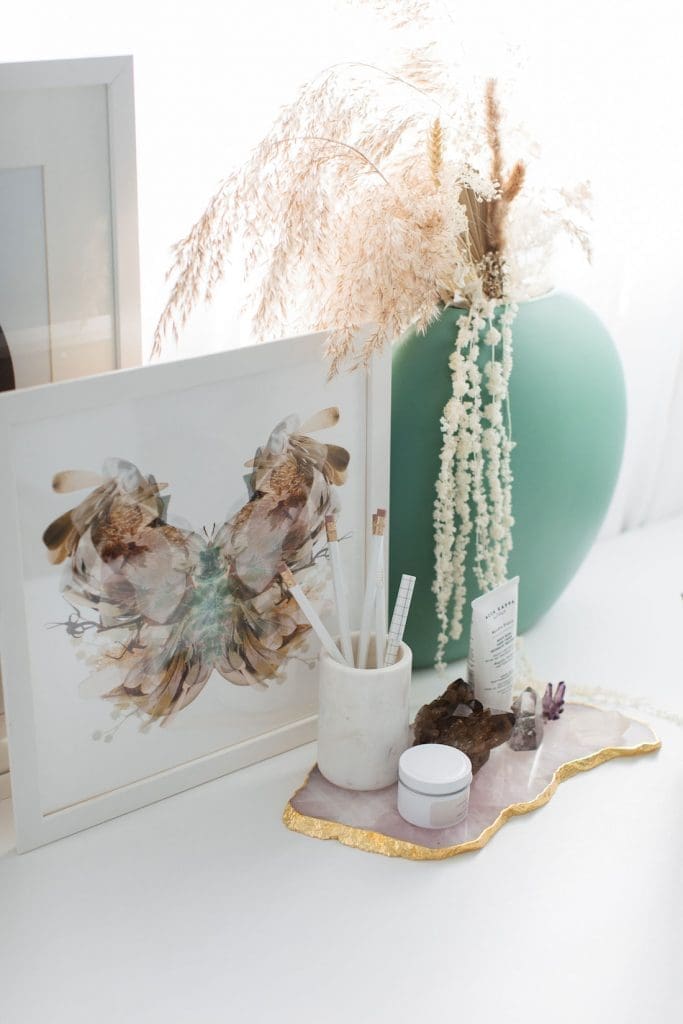We’ve shared plenty of tips on how to set up a productive home office and today we’re taking things one step further, sharing advice on how to design a home office for in-person client meetings! Whether you run your business from home or have a side hustle that occasionally sees clients arrive at your home, it’s important to have more than simply a spare desk and chair. Whether your clients are feeling excited or anxious before their appointment, the first thing they’ll see is the office space you’ve created for them.
If you set the scene with care and attention to detail, your clients will feel welcomed and relaxed and be more likely to have a productive conversation. An organised, uncluttered home office will also ensure that your face-to-face interactions are efficient and distraction-free, making it easier to develop a rapport with clients and get to the heart of your conversations.
So, before you invest in a new desk or reconfigure your lighting, read on to learn about the benefits of setting up a professional space for in-home meetings.
Related article: Designing your dream home office: A space that fuels inspiration
Related article: Your guide to creating the perfect home office

How to design your home office layout
Designing your home office layout starts with finding the best space for it. The best home office locations are in the quietest part of your home. It should also be placed away from high-traffic areas.
To make the space both functional and professional, consider commercial office furniture in Melbourne to create a comfortable and stylish environment.
1. Essential furniture for client meetings
Choosing furniture is an essential part of a home office setup, but also when the space will be used for in-person client meetings. The most important thing to focus on is the seating. Make sure your visitors will feel as comfortable as you do in your home office.
Good support in chairs will help everyone stay attentive and relaxed during the meeting and will set the right tone (professional yet welcoming). As for the desk, try to find a balance between functionality and design. The table should be spacious enough to accommodate your work tools and your client’s materials. At the same time, it shouldn’t make the space look too stuffy or cluttered.
Transforming your study into a home office is a great option, as you can work with the existing layout of the space. Choose furniture that will go well with it and will make the most of the space you have. Furniture in the study home office should be functional and flexible, so that it can be used for different purposes. For example, a desk with built-in storage will be a nice and practical addition to the office. Or, you can pick chairs that can be easily moved or rearranged.
2. Creating a professional ambience
The ambience of your home office can make a big difference in the impression you give to your clients. Pay attention to lighting: natural light is always best, so try to arrange your space to take advantage of it. Artificial lighting is also important: a lamp or overhead light can help your space feel warm and professional, even on a cloudy day or as you work into the evening.
Decor should be simple and refined; a neat, uncluttered background will help clients pay attention to your conversation.

3. Technology and connectivity
Let’s start with the basics. Have a reliable, strong Wi-Fi connection. You can’t go wrong with this as a first step as there is nothing worse than a meeting being interrupted because of a weak signal. Quality equipment matters as well, from a good microphone to a clear webcam. Once you have the basics covered, here are a few tips to take things up a notch.
Tools that help you go above and beyond the basics can further enhance the overall meeting experience. Video conferencing software is a great example of a tool that is a must-have, even if most of your meetings will be in person. After all, these days, it is not uncommon to have a hybrid meeting or a follow-up to an in-person meeting online.
Presentation technology, such as a wireless clicker for navigating through your slides or even a second monitor, can be a great way to support a discussion with clear, well-organised information and keep the meeting on track.
Setting up your technology properly will help you feel more confident and prepared when meeting with clients and leave a great impression of being prepared and ready to work together.
4. Organising and decluttering
Your home office should be neat and well-organised to promote focus and eliminate any unnecessary distractions. This allows your clients and yourself to be as productive as possible while being there. Functional storage and organisational solutions such as shelves, filing cabinets, or stylish baskets will help you stay neat and tidy. It will also allow you to find things quickly and when you need them without having to search endlessly.
A well-organised office will also help you stay more productive in your work while making you feel relaxed and in control of the space. Streamlining the styling of your office makes the space more organised and professional in a more enjoyable and inviting way.
5. Adding personal touches without losing professionalism
For a stylish home office, you should consider adding branding first. For example, this could be elements related to your business, such as a logo on your notepaper or colours that match your brand. These types of small details will give your space a refined and well-rounded look.
However, don’t forget to also add small, personal objects that help to build rapport, like a nice photo, a work of art, or a plant. These will give your space a homey and welcoming feel, and help your clients to relax and feel more engaged during meetings.

6. Health and comfort considerations
Incorporating health and ergonomics into your home office design ensures that it’s not just stylish, but also kind to your body. Ergonomic furniture, such as a supportive chair and a desk at the right height, can help you avoid discomfort and fatigue during long work hours. Natural light or full-spectrum light bulbs also contribute to well-being and can help reduce eye strain.
People often overlook ventilation, air quality, and temperature control, but these are just as important for maintaining a comfortable and healthy workspace. Simple steps like using air-purifying plants or a quality HVAC system ensure that the air you breathe is fresh and clean, and that the temperature is always just right. These features help create an environment where you can work productively and feel at your best.
7. Security and confidentiality
Privacy, whether or not client meetings are conducted in a home office, is a key aspect of client confidentiality. You must use physical security measures — such as locked file cabinets, password-protected computers, and shredding documents with sensitive information — to ensure this. These measures show the client that the home office keeps their personal data safe and secure, earning their trust.
The privacy of conversations held in the home office must also be taken into account. Soundproofing, screening areas within the home office, or setting boundaries with family members during meetings are all examples of steps that can be taken to ensure privacy. By taking these steps, clients will feel more comfortable discussing confidential information with the home office, leading to stronger relationships and greater peace of mind.
Hosting successful in-person meetings
The experience begins the moment a client steps into your home office, so it’s important to welcome them warmly. The first impression sets the tone for the meeting. Let your client know what they can expect during their visit, such as the purpose of the meeting, the duration, and any necessary preparations. This helps to manage expectations and make them feel more at ease.
Use the course of the meeting by actively listening and being flexible to address any issues or changes that arise. Stay on topic and avoid distractions to ensure that the meeting runs smoothly. At the end of the meeting, send a follow-up message or email to summarise the discussion and outline any next steps. This shows professionalism and attention to detail, and it also helps to build trust with your clients.
Meetings at your home office should be smooth sailing with the right environment and meeting management. With a thoughtful approach to your space and attention to detail during meetings, every client visit can be a positive and memorable experience.






